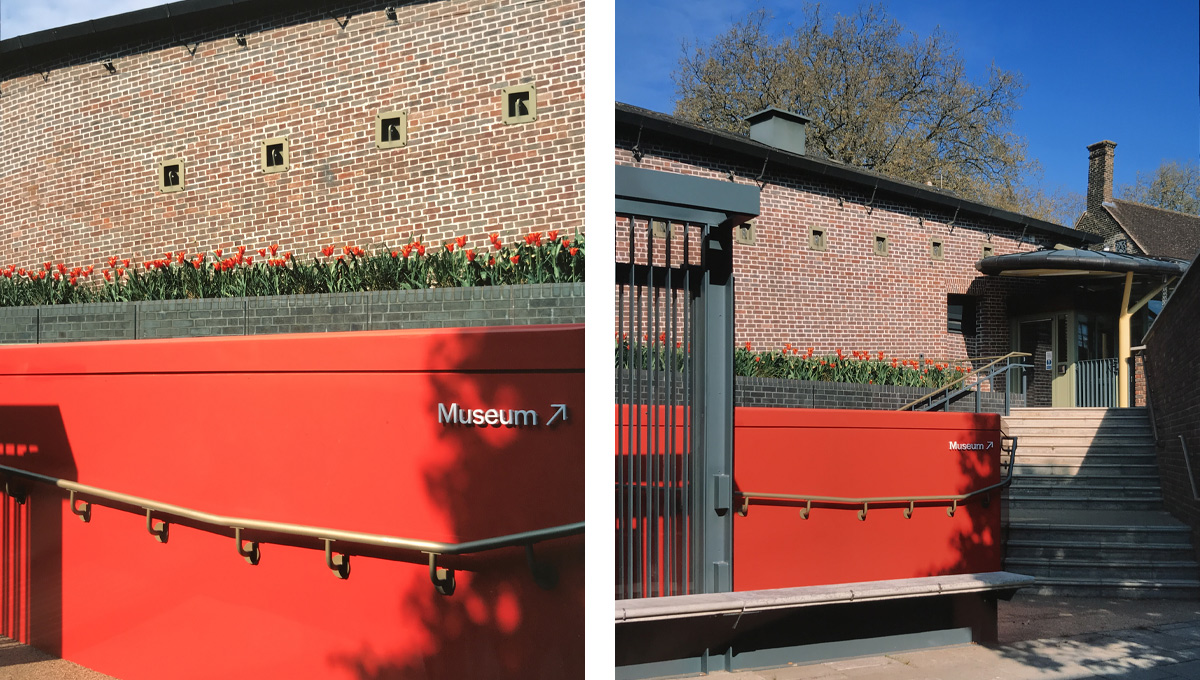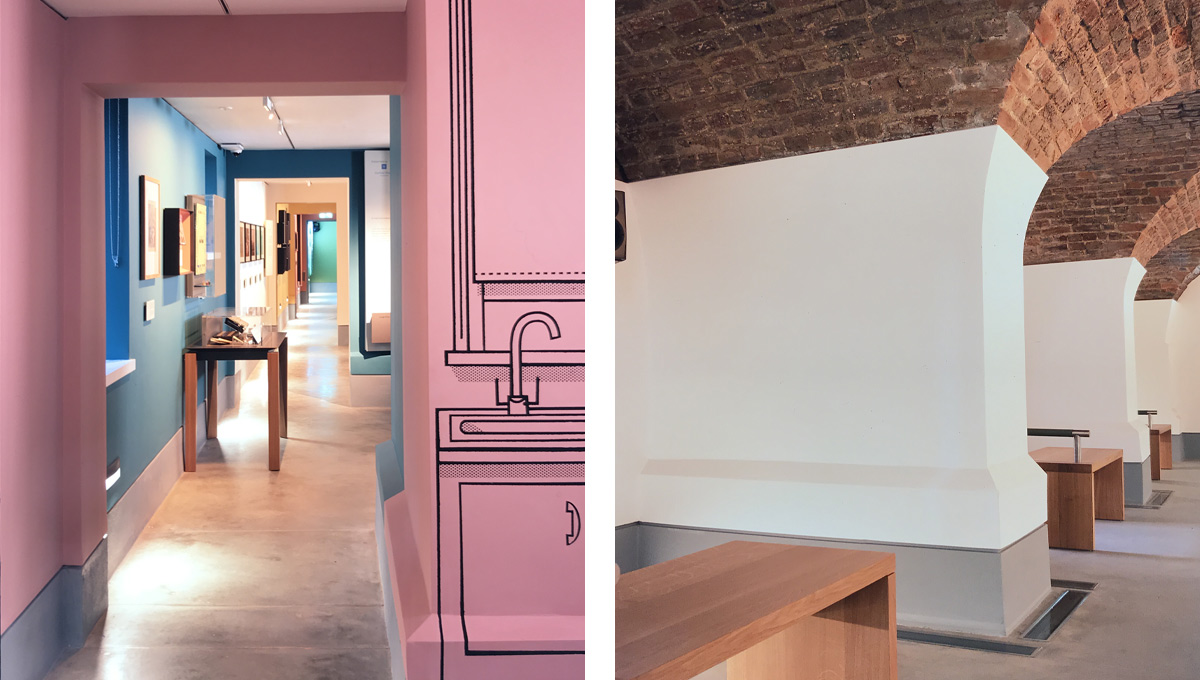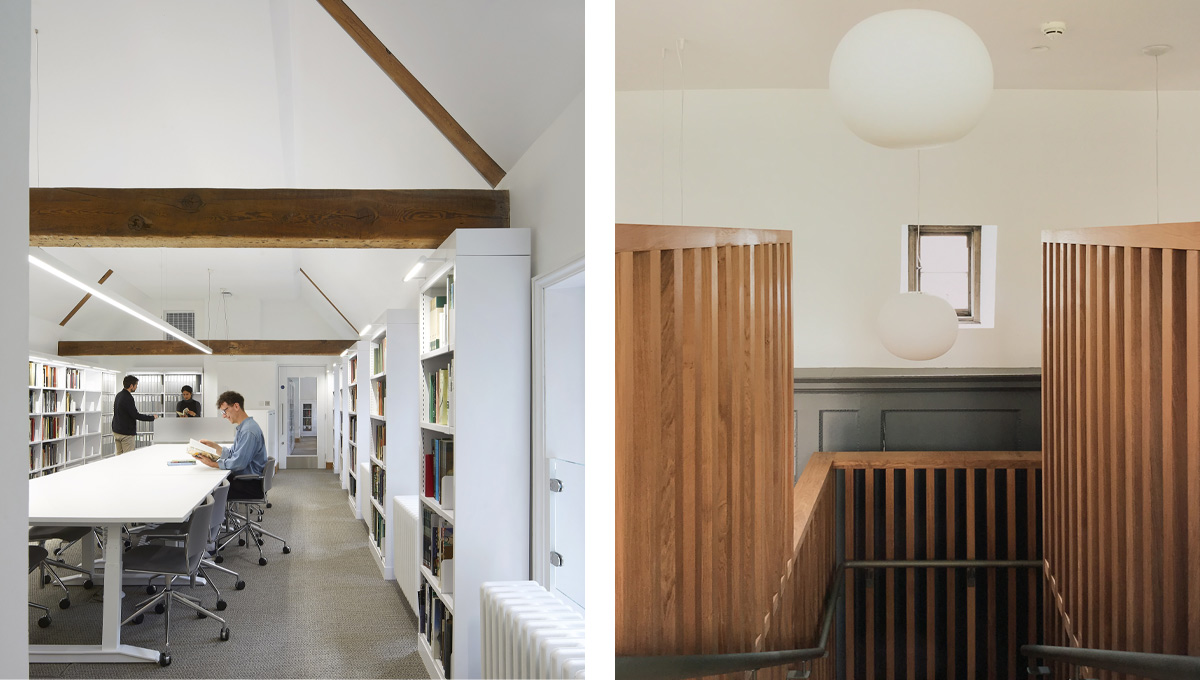Post
Event write up: The Museum of the Home
31 Aug 2021
For one of the Society’s first ‘in real life’ tours since lockdown we paid a visit to the recently reopened Museum of the Home in E2. Don Brown reports.
A Society tour of The Museum of the Home to see the changes to the building with Naila Yousuf, the lead architect of the team from Wright + Wright who have redesigned the spaces of the Museum, and the changes to the collection with Sonia Solicari, the Museum Director.
The Museum of the Home (formerly the Geffrye Museum) is a much-loved institution, its ‘Rooms Through Time’ recreating domestic interiors from the past 500 years. It is housed in 18th century almshouses, with 1990s additions by Branson Coates, at the Shoreditch end of the Kingsland Road.
Wright + Wright have added two new buildings - an education centre and learning rooms - and dramatically increased the internal space of the museum to incorporate new galleries, reading rooms and secure storage. All of this was done without fundamentally changing the look of the original almshouses and without encroaching on either the green space between the museum and Kingsland Road, or the historic gardens that complement the interiors.
Perhaps the most obvious change has been to reorient the museum, with a new entrance built onto the street facing Hoxton Overground station (and which includes public seating) and with the Branson Coates 1998 space repurposed from being the restaurant to a role as the new entrance hall. (The museum purchased the closed pub on the corner of this street; the ground floor has become the new restaurant/cafe, and upstairs has been redeveloped as flats whose sale has provided additional funds.)
Inside the main building the basements - formerly coal cellars and laundry areas - were dug out to accommodate new galleries, and new, more stable, floors have been given to the upstairs level so that these can now be used for storage and as a reading room. As Clare Wright of the practice explains: “we fixed drains, stabilised structure, insulated, replaced heating and electrics and dug down… We reopened blocked-up windows and doors, put back floors, added staircases and lifts…”
The result is a building that has been re-energised and repurposed, but without losing what gave the original its charm. It is now a lighter, more accessible space that connects the galleries to each other and to the gardens and the public space in much better ways.
The same is true of the collection: much has been added and nothing has been taken away.
New ‘Rooms Through Time’ have been created, including a 1970s ‘Dalston Living Room’, curated by the dramatist Michael McMillan that aims to capture the domestic experience of West Indian migrants. There is also a 1990’s “loft space” containing furniture and objects from the end of the last century (somewhat tragically for your correspondent, who has tom come to terms with his life becoming a museum exhibit).
Better labelling and contextualisation of the other ‘Rooms Through Time’ makes us more aware of the lives of the occupants and the lives of the staff that they would have employed, and in addition to the historical rooms, the new gallery space in the former basements provides a more thematic examination of what the concept of “home” involves, mixing historic and contemporary objects and stories. This mix of lived experience and of artefacts provides a better perspective on what “home” meant for different periods and for different people.
The museum is well worth a visit, whether one is interested in the architectural transformation of the space or in the collection itself. The Director and Trustees, and Wright + Wright are to be applauded for revitalising this much-loved museum so that it can be enjoyed for several more generations of visitors.
The Museum of the Home is open Tuesday to Sunday from 10am to 5pm and is free to enter. Timed entrance tickets may be booked here.


